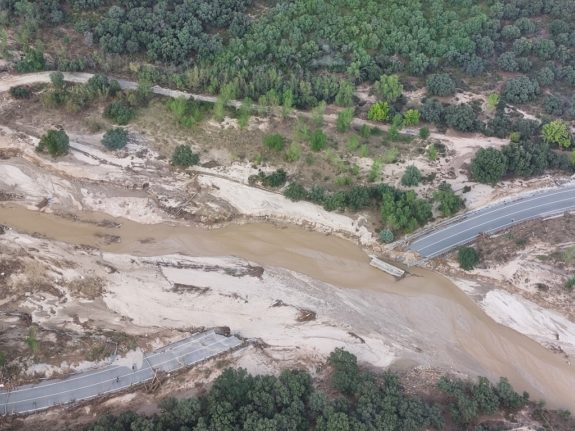And fears were growing for the fate of a sixth person, a woman missing from Toledo, central Spain.
The body of an 83-year-old man swept away by floodwaters in the town of Villamanta near Madrid was recovered seven kilometres (four miles) from where he went missing, said Guardia Civil police force spokeswoman Ana Martín.
Police also found the body of a 47-year-old whose car had been swept away by a swollen river in the nearby town of Aldea del Fresco, she added.
Emergency services on Monday rescued his wife and two children who were also in the vehicle.
They included his 10-year-old son, who had spent the night perched in a tree above the floodwaters.
The head of the regional government of Madrid, Isabel Díaz Ayuso, offered her condolences in a post on X, formerly Twitter, and paid tribute to the work of the rescue services.
Con todo el dolor conocemos el triste desenlace de la búsqueda de los dos desaparecidos por la DANA en el suroeste de Madrid.
Nuestro cariño a sus familias y a los vecinos y miembros de los cuerpos de seguridad y emergencias que no han dejado de buscarles.
Estaremos a su lado.
— Isabel Díaz Ayuso (@IdiazAyuso) September 8, 2023
“Our love to their families and to the area residents and police and emergency services workers who did not stop looking for them,” she wrote. “We stand by you.”
The weekend storm, which swept across the whole country, transformed streets into raging torrents, hurled cars into rivers and washed away roads and bridges.
The storms disrupted travel for tens of thousands of people on the final weekend before the start of the new school year.
The high-speed rail links between the Spanish capital and the southwestern region of Andalusia and the east coast region of Valencia was one main travel forced to close.
Rescuers had already found the bodies of three men on Monday in the central province of Toledo.
Emergency services are still looking for a woman missing from the town of Valmojado in Toledo.
Scientists warn that extreme weather such as heatwaves and storms is becoming more intense as a result of climate change.



 Please whitelist us to continue reading.
Please whitelist us to continue reading.
Member comments